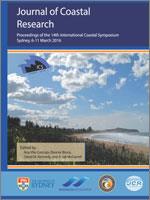Lee, H.Y.; Park, J.H.; Jeon, C.; Seo, S.; Kim D.G.; Park, Y.G.; Min H.S., and Kim, S.D., 2016. Second-mode semidiurnal internal tides on the continental slope of the southwestern East/Japan Sea. In: Vila-Concejo, A.; Bruce, E.; Kennedy, D.M., and McCarroll, R.J. (eds.), Proceedings of the 14th International Coastal Symposium (Sydney, Australia). Journal of Coastal Research, Special Issue, No. 75, pp. 1387 - 1391. Coconut Creek (Florida), ISSN 0749-0208.
Energetic second-mode semidiurnal internal tides with a three-layer-like structure were observed from time series of 26-hour-long 2 hourly velocity profiles collected on the continental shelf-slope of the southwestern East/Japan Sea during a spring tidal period in early November 2013. Modal-fitted baroclinic semidiurnal signals using a least-squared method demonstrate that the kinetic energy of second-mode semidiurnal internal tides is comparable to the first-mode ones. In order to understand physical processes affecting the enhanced generation of the second-mode internal tides and their spatio-temporal variations, we utilize 30-month long numerical simulation outputs from a real-time ocean forecasting system of the East/Japan Sea. The model includes realistic oceanic circulation and stratification together with tides of 16 major components. The analysis results reveal that the most energetic second-mode semidiurnal internal tides generate during fall months when the main thermocline was located near the mid-depth (100–150 m) over the continental shelf-slope. It appears that the deepened mixed layer together with the enhanced mid-depth stratification induced by the increased flow through the western channel of the Korea Strait provide a second-mode favorable stratification condition near the internal tide generation region. This study has an implication that the seasonally-varying second-mode semidiurnal internal tides would have an impact on the tide-induced ocean mixing in the southwestern East/Japan Sea.





